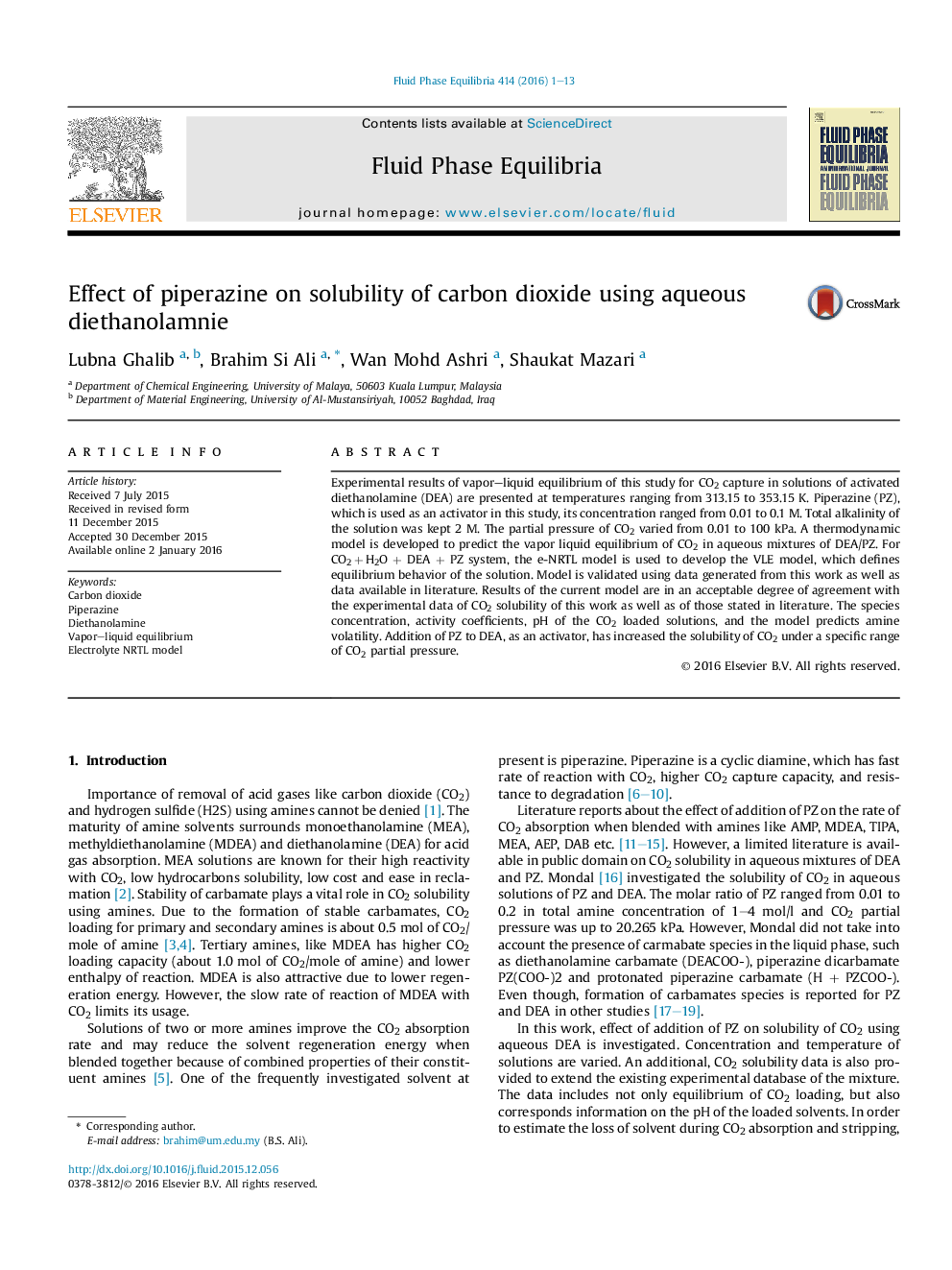| Article ID | Journal | Published Year | Pages | File Type |
|---|---|---|---|---|
| 200894 | Fluid Phase Equilibria | 2016 | 13 Pages |
•Thermodynamic model has been developed for aqueous PZ-DEA-CO2.•Addition of PZ increased CO2 loading of activated DEA solutions.•Addition of PZ is more effective at lower CO2 partial pressure.•Increase in temperature decreases CO2 loading of activated DEA solutions.
Experimental results of vapor–liquid equilibrium of this study for CO2 capture in solutions of activated diethanolamine (DEA) are presented at temperatures ranging from 313.15 to 353.15 K. Piperazine (PZ), which is used as an activator in this study, its concentration ranged from 0.01 to 0.1 M. Total alkalinity of the solution was kept 2 M. The partial pressure of CO2 varied from 0.01 to 100 kPa. A thermodynamic model is developed to predict the vapor liquid equilibrium of CO2 in aqueous mixtures of DEA/PZ. For CO2 + H2O + DEA + PZ system, the e-NRTL model is used to develop the VLE model, which defines equilibrium behavior of the solution. Model is validated using data generated from this work as well as data available in literature. Results of the current model are in an acceptable degree of agreement with the experimental data of CO2 solubility of this work as well as of those stated in literature. The species concentration, activity coefficients, pH of the CO2 loaded solutions, and the model predicts amine volatility. Addition of PZ to DEA, as an activator, has increased the solubility of CO2 under a specific range of CO2 partial pressure.
